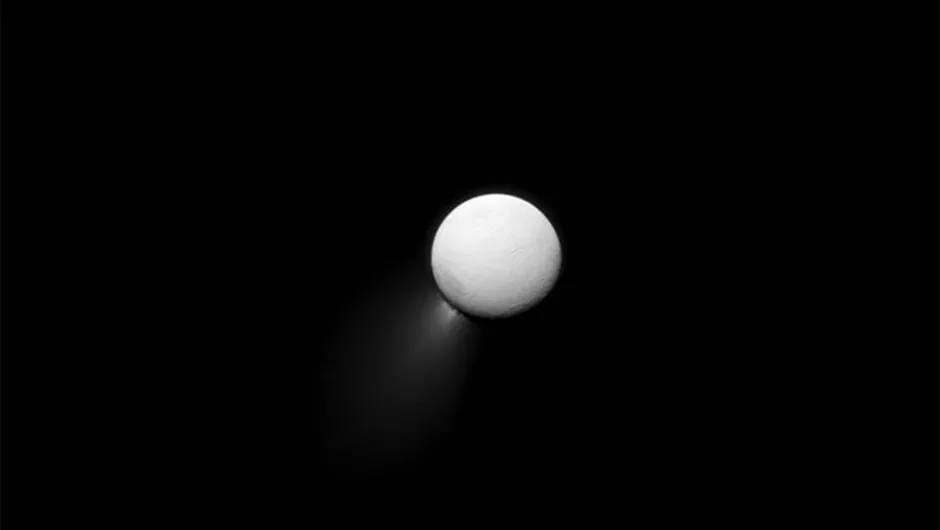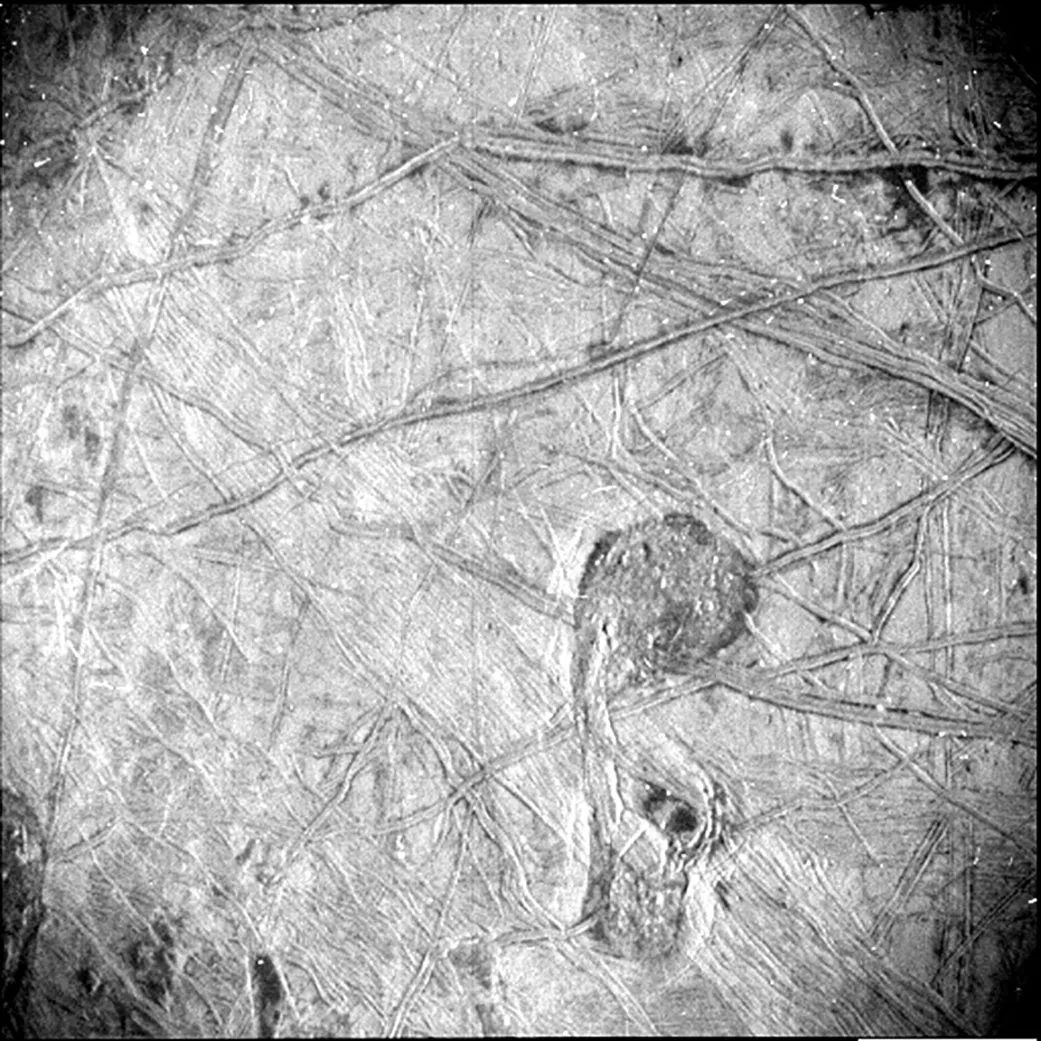If the icy moons of Europa and Enceladus host life beneath their frozen exterior, we wouldn't have to dig very deep to find it, according to a new NASA study.
Jupiter's moon Europa and Saturn's moon Enceladus both have a frozen crust atop a subsurface ocean of liquid water, making them some of the best places to search for signs of life beyond Earth.
NASA says that if these subsurface oceans do indeed support life, signatures of life in the form of organic molecules could survive close to the surface, and that's despite the harsh radiation.

"Based on our experiments, the ‘safe’ sampling depth for amino acids on Europa is almost 8 inches (around 20 centimeters) at high latitudes of the trailing hemisphere (hemisphere opposite to the direction of Europa’s motion around Jupiter) in the area where the surface hasn’t been disturbed much by meteorite impacts," says Alexander Pavlov of NASA’s Goddard Space Flight Center, lead author of the paper published on 18 July 2024 in Astrobiology.
"Subsurface sampling is not required for the detection of amino acids on Enceladus – these molecules will survive radiolysis (breakdown by radiation) at any location on the Enceladus surface less than a tenth of an inch (under a few millimeters) from the surface."
Life on Europa and Enceladus?

Frozen moons orbiting the gas giants Jupiter and Saturn might be the last places you'd expect to find life in our Solar System.
Their surfaces are icy, cold and blasted by radiation both from deep space and from their host planets.
Yet the gravitational forces generated by the host planets, and neighbouring moons, cause heating that maintains a liquid ocean beneath the exteriors of Europa and Enceladus.
And because liquid water is a key ingredient for life as we know it, Europa and Enceladus are prime candidates for habitable conditions in our Solar System beyond Earth.
That's why the Cassini mission spent so long exploring the surface of Enceladus, diving through plumes erupting from beneath the moon's surface.
And it's why all eyes are on ESA's Juice mission, which will explore 3 of Jupiter's icy moons.

The team behind this study used amino acids as representatives of biomolecules on icy moons.
Finding amino acids on Europa or Enceladus could be a sign of life, because they are a key ingredient for life on Earth.
The researchers mixed samples of amino acids with ice and cooled them to –196°C (–321°F) in sealed vacuums, then hit them with gamma rays.
They also tested the survival of amino acids in dead bacteria in ice, and tested samples of amino acids in ice mixed with silicate dust, to replicate the potential for surface ice on the moons to be mixed with meteorite material.

Using data from these experiments, the team then calculated the drilling depth in locations where 10% of the amino acids would be able to survive.
They found that amino acids degraded faster when mixed with dust, but slower when coming from microorganisms.
"Slow rates of amino acid destruction in biological samples under Europa and Enceladus-like surface conditions bolster the case for future life-detection measurements by Europa and Enceladus lander missions," says Pavlov.
"Our results indicate that the rates of potential organic biomolecules’ degradation in silica-rich regions on both Europa and Enceladus are higher than in pure ice and, thus, possible future missions to Europa and Enceladus should be cautious in sampling silica-rich locations on both icy moons."
Read the full paper at www.liebertpub.com/doi/full/10.1089/ast.2023.0120

